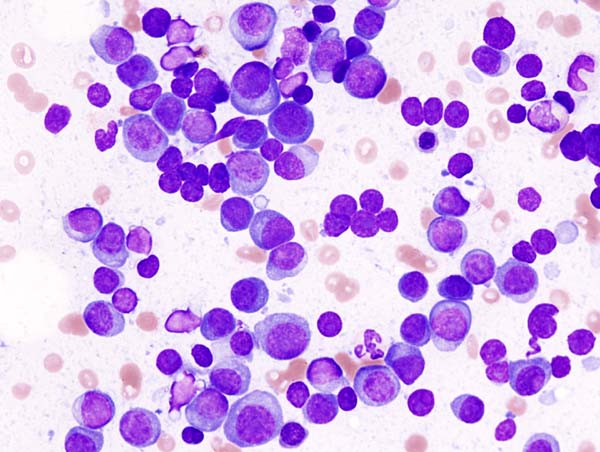University of Oxford researchers have developed new clinical prediction models for use in primary care with the aim of accelerating the diagnosis of myeloma, a cancer of the bone marrow.

(Photo: wikimedia commons)
Myeloma caused 117,077 deaths worldwide in 2020. Earlier diagnosis improves the rate of survival but unfortunately, delays in myeloma diagnosis are common and result in poorer patient outcomes.
One reason for these delays is that myeloma symptoms are non-specific and relatively common in people without cancer. For example, back pain is associated with myeloma, yet there are many other non-myeloma causes of this symptom.
Additional measures are therefore needed to highlight the possibility of myeloma in patients where GPs do not initially suspect this disease. GPs frequently order simple laboratory tests, such as the full blood count, to investigate patients presenting with non-specific symptoms.
Previous research by Dr Constantinos Koshiaris, Dr Jason Oke, Dr Brian Nicholson and colleagues from the University of Oxford’s Nuffield Department of Primary Care Health Sciences and the University of Exeter identified certain abnormalities in blood test results that indicate a higher risk of myeloma, such as low haemoglobin which can be observed up to two years before a myeloma diagnosis.
In their latest paper, published in the British Journal of General Practice, this research team, a number of whose members are supported by the NIHR Oxford Biomedical Research Centre, have developed new clinical prediction models for myeloma that incorporate both symptoms and blood test results.
Using the Clinical Practice Research Datalink (GOLD version), a primary care database containing electronic health records for more than 11 million patients in the UK, the team identified the most common symptoms and full blood count results recorded for patients with myeloma.
The most predictive of these were included in the models they developed and the new tools were validated against a set of test data. Decisions made using their prediction models resulted in fewer false positives and more true positives when compared to single tests or symptoms alone.
By identifying patients at highest risk of myeloma in primary care, these new prediction rules have the potential to reduce diagnostic delays by a substantial amount.
Further research is now needed to understand more about the feasibility and implementation of this tool in the primary care setting and the impact it will have on the diagnostic pathway and patient outcomes.